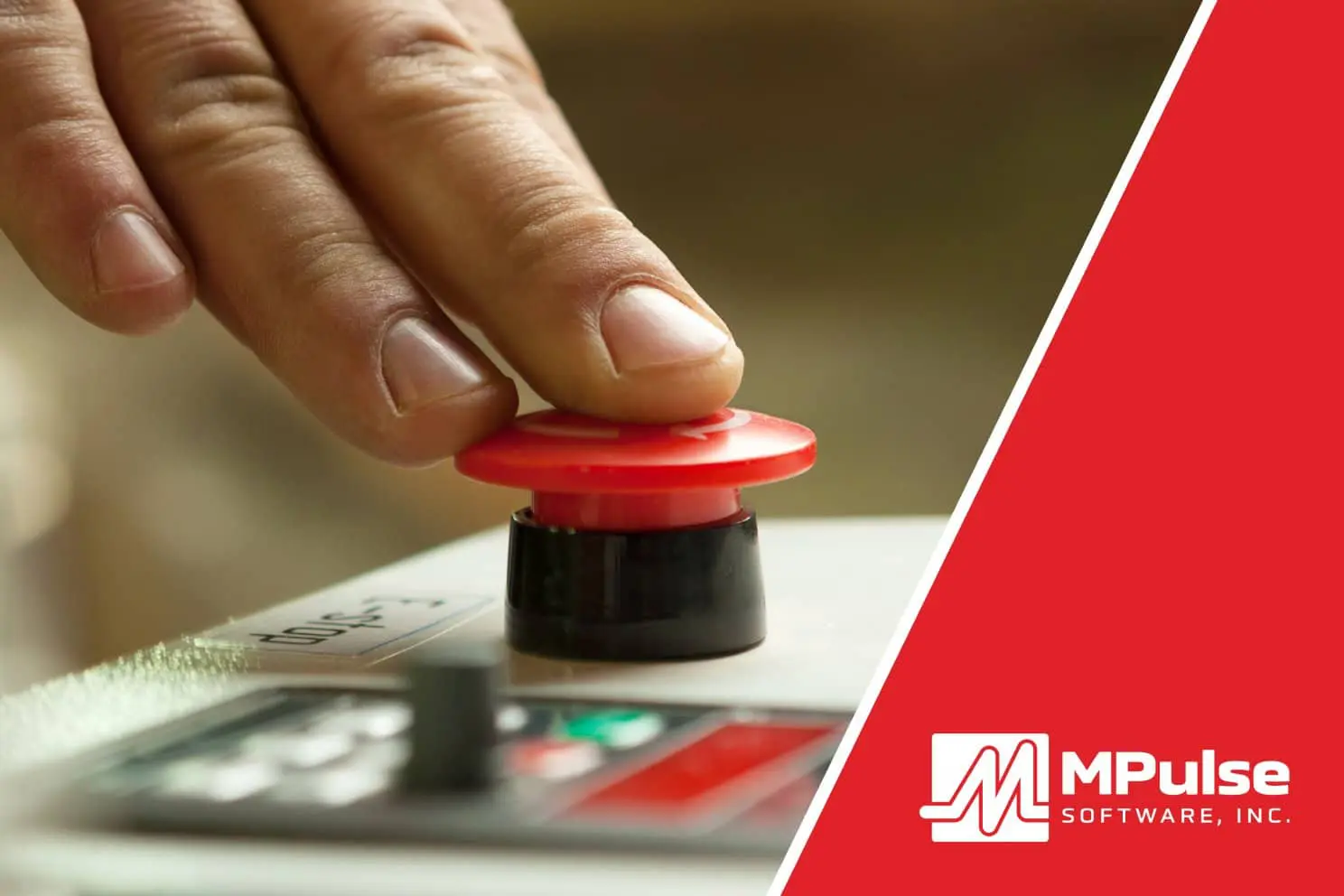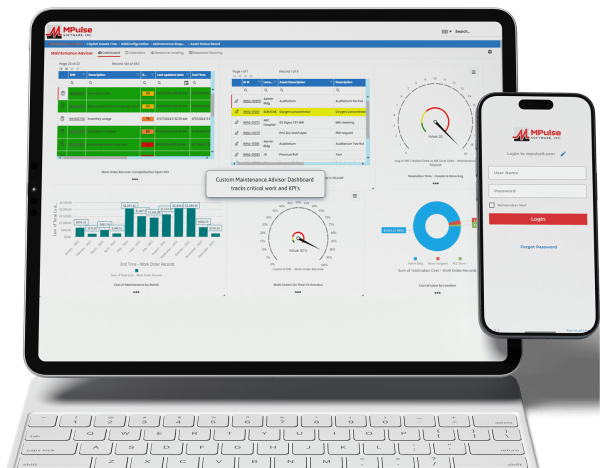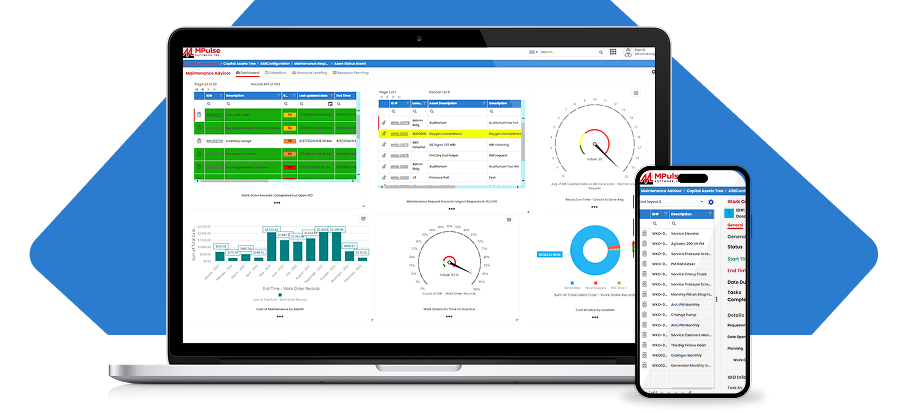Reducing equipment downtime—and the corresponding loss of productivity—is one of the biggest benefits our CMMS users find with their MPulse software.
The maintenance team is on the frontline when things aren’t working. And, when your organization’s equipment hasn’t been maintained properly, you’re going to experience more downtime. That translates into lost dollars and intense pressure on the maintenance team to get production running again.
Here are five ways MPulse can help.
Table of Contents
#1: Develop or Strengthen a Preventive Maintenance Schedule
When you use CMMS to schedule and track PMs, you’ll reduce emergency maintenance issues and unexpected production stoppages. This, in turn, cuts overtime costs for emergency repairs and reduces production losses. You can also schedule maintenance for off hours by tracking equipment use time.
CMMS software generates a schedule of preventive maintenance tasks, making it simpler to follow the manufacturer’s guidelines. Properly maintained assets perform more efficiently, use less energy, and fail less often—extending their usable life.
#2: Improve Inventory and Part Management
MPulse allows you to control your stock based on need and availability. As a result, the right parts are on the shelf, yet you can minimize other parts that are used less frequently.
MPulse can streamline reordering by determining current inventory levels and automatically generating purchase orders based on need. For example, if a critical part has a three-week lead time, you can adjust stocking levels to make sure it is available when your staff needs it. You also can use MPulse to control capital outlays by identifying unused or slow-moving parts to return to the vendor.
#3: Determine If It’s Better to Repair or Replace
CMMS software helps you capture key data and turn it into reliable information to help make cost-effective choices about asset management. MPulse can not only track the age of the equipment, but the miles, hours, life-to-date repair dollars, and many other metrics—helping you decide when it becomes cheaper to replace an asset instead of repairing it.
With a little more information about operations, you can use that information to calculate the opportunity cost due to downtime. Comparing that to the estimated cost (and potential added productivity) of a new asset will tell you if it’s better to repair or replace. Plus, you’ll have the data to back up your decision.
#4: Streamline Maintenance Workflows
Automated communication tools in MPulse streamline the approval and assignment process with confirmations sent to requesters, managers, and technicians. In turn, status updates are automatically emailed to the appropriate people as the technician updates the work order.
MPulse also can automatically filter maintenance requests based on your predetermined criteria, then quickly route them to the appropriate people for review and approval. That saves time and streamlines maintenance workflows for the whole team.
#5: Make Information Easily Accessible
Each work order in CMMS automatically records labor time, parts and inventory costs, asset history, and other key information. This information eliminates lost information, reducing confusion and errors.
Plus, you’ll have detailed records of each vendor’s contact information, rates, and personnel in your CMMS database. You can track which vendors provide which goods and services as well as find out who is available for work.
The less downtime you experience, the better. And the shorter duration of that downtime when it does happen, the better.
Contact us to learn more about how MPulse can help your organization reduce downtime.






